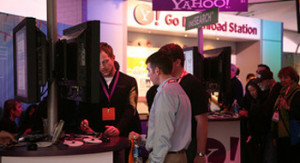Planning for a Successful Tradeshow

Success – you’ve secured exhibit space at one of the most well attended tradeshows/conferences for the mortgage industry; the payment has been sent and now you’re ready to sit back and relax until the day of the event, right? Sure, take that approach if you want to blend in with the rest of the exhibitors, but given the opportunity to strengthen your brand, test your marketing messages and expand your lead pipeline, you may want to reconsider!
Every aspect of participating in a tradeshow/conference needs to be carefully planned and executed to maximize your investment. According to Skyline, B2B exhibitions were 39.2% of B2B marketing budgets in 2011, the largest amount of any other marketing channel1. Consider tackling your tradeshow planning much like organizing a large-scale marketing campaign. Create a program/event brief detailing each aspect of your participation. Be sure to document all of the details, laying the foundation for a streamlined process that can be duplicated – with some tweaking – over and over again.
A sampling of the items to consider when participating at a tradeshow/conference:
- Brand Management: Your organization’s brand is one of its most valuable assets. As a company, you need to determine how your brand will be perceived and what first impressions you want to make. 81% of tradeshow attendees have buying authority2, so let those attendees see what a professional brand you have created. From the booth messaging and signage to the dress attire of company representatives – it all plays a critical role in your company’s participation.
- Company Resources: Step back and ask yourself – what team member is the best prepared to represent my company at this event? Don’t just send anyone to ‘man your booth’. If your booth staffers lack the product and industry knowledge to competently answer questions, attendees will take their business to someone who knows their stuff instead3. Review your staff and determine who might have subject matter expertise or even have prospects attending, providing a chance for further discussion. And set expectations, team members are there to network.
- Exhibit Logistics: Familiarize yourself with the exhibit hall layout and contact the exhibit house handling logistics. Determine what additional items you need for your booth like electrical (how many watts); internet (hard wired or wireless); carpet (padding or not); and don’t forget the shipping and materials handling forms.
- Sponsorships Opportunities: Should you be an event sponsor or not? Depending on the event, this can be a strategic addition to your overall marketing program. Be sure to weigh the pros and cons of sponsorship at the tradeshow/conference.
99% of marketers said they found unique value from trade shows they did not get from other marketing mediums4. Over the next several weeks, we will cover a checklist of items that you need to be aware of when exhibiting at tradeshows and conferences to ensure your company’s participation is successful. From booth location to social media – we’ll cover it all. Our goal is to give you a better understanding of what you can do to maximize your company’s participation and more importantly, how to secure leads for future business.
Sources:
- 1 CEIR: The Spend Decision: Analyzing How Exhibits Fit Into The Overall Marketing Budget. http://www.skylinetradeshowtips.com/16-powerful-stats-on-the-value-of-trade-shows/
- 2 CEIR: The Spend Decision: Analyzing How Exhibits Fit Into The Overall Marketing Budget. http://www.skylinetradeshowtips.com/16-powerful-stats-on-the-value-of-trade-shows/
- 3 Skyline “6 Reasons Attendees Don’t Trust Your Booth Staffers”
http://www.skylinetradeshowtips.com/6-reasons-attendees-dont-trust-your-booth-staffers/ - 4 Source: CEIR: The Changing Environment of Exhibitions.
http://www.skylinetradeshowtips.com/16-powerful-stats-on-the-value-of-trade-shows/
